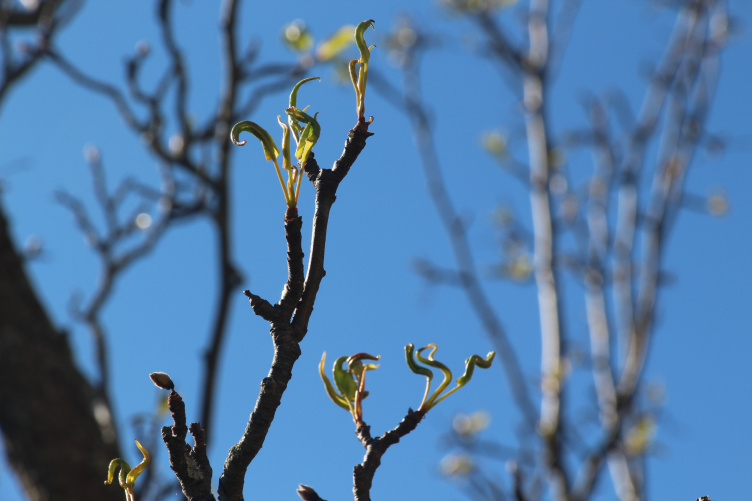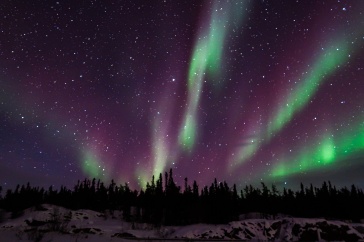
New research from UNH found that the timing of spring is changing as our climate does.
With the first day of spring around the corner, temperatures are beginning to rise, ice is melting and the world around us is starting to blossom. Scientists sometimes refer to this transition from winter to the growing season as the “vernal window,” and a new study led by UNH shows this window may be opening earlier and possibly for longer, with potential implications for New England rites of spring like maple sugaring, bird migration and road repairs.

“Historically, the transition into spring is comparatively shorter than other seasons,” says Alexandra Contosta, a research assistant professor in the Earth Systems Research Center within the Institute for the Study of Earth, Oceans, and Space (EOS). “You have snow melting and lots of water moving through aquatic systems, nutrients flushing through that water, soils warming up and buds breaking on trees. Something striking happens after a very cold winter or when there’s been a lot of snow. Things seem to wake up all together, which is why spring seems to happen so quickly and can feel so dramatic.”
Contosta and her colleagues were interested in not just the timing of these events but also how climate affects the lag between them. Their findings, published online and in print March 14 in the journal Global Change Biology, show that temperature and the amount of snowfall each year are key drivers to the timing of these events. Warmer winters with less snow resulted in a longer lag time between spring events and a more prolonged vernal window.
Previous research has shown that Northern Hemisphere snow cover has declined significantly in the past 30 years. To see if this may be influencing the vernal window, Contosta led a team of scientists that collected data from a network of New Hampshire EPSCoR soil and water sensors installed across the state. They monitored snow levels and the forest canopy for three years and supplemented their information with climate and satellite data along with precipitation and stream data collected by more than 100 volunteers across the state.
"Something striking happens after a very cold winter or when there’s been a lot of snow. Things seem to wake up all together, which is why spring seems to happen so quickly and can feel so dramatic."
The researchers not only looked at dates when certain events marking the season transition occurred — the melting of snow and the emergence of leaves in trees, for example — but also the time period between these events.
This changing timetable for spring may have potential ecological, social and economic consequences that Contosta and her team currently are investigating. Agriculture, fisheries and even outdoor recreation activities can be highly dependent on the timing of springtime climate conditions. A longer spring could mean a longer mud season requiring more road repairs and truck weight restrictions, a possible shift in the duration of the maple sugaring season or earlier lake thaw, which might have implications for migratory birds.
The researchers plan to test their conclusions with data from a larger geographic area and over longer periods.
New Hampshire EPSCoR’s Ecosystems & Society project team and co-authors include Alden Adolph and Mary Albert, Dartmouth College; Denise Burchsted, Keene State College; Mark Green, Plymouth State University; David Guerra, St. Anselm College; Elizabeth Burakowski, Jack Dibb, Mary Martin, William H. McDowell, Michael Routhier, Cameron Wake, Wilfred Wollheim, University of New Hampshire; and Rachel Whitaker, White Mountains Community College.
This research was supported by award EPS-1101245 from the National Science Foundation.
-
Written By:
Robbin Ray ’82 | UNH Marketing | robbin.ray@unh.edu | 603-862-4864

















































